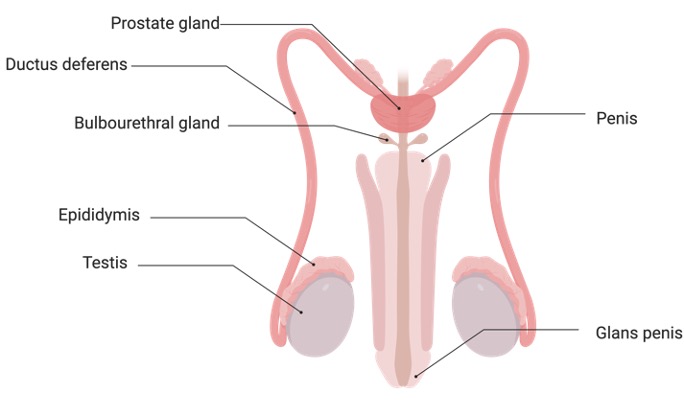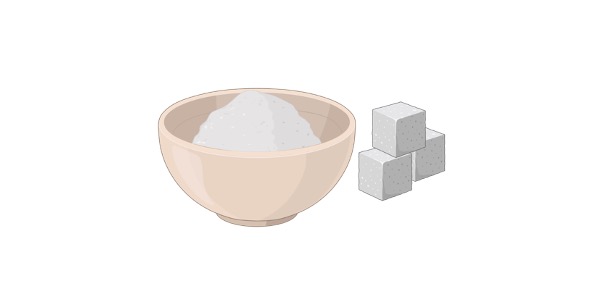Table of Contents
Human Reproduction Definition
The male reproductive organs are called gonads- testes and female reproductive organs are ovaries.
Gametes: Spermatozoa are produced by gonads in males whereas female produce ova or eggs, this process is called gametogenesis. Male secrete steroid hormone named testosterone and estradiol, progesterone are secreted in females. Testosterone is a part of class of hormones called androgens, which have masculinizing actions whereas estradiol belong to a class called estrogens.
The release of pituitary gonadotropins: FSH and LH has stimulated by GnRH. The development of sperm and ova and secretion of sex hormones ere stimulated by these gonadotrophins.
Ducts are the accessory reproductive organs, which helps in the transportation of sperm and ova. The sexual characters can be seen by the external differences between males and females.
Gametogenesis: Germ cells are the developing gametes that proliferate by mitosis in their first stage of development. Mitosis or cell division is the process in which each daughter cell receives a full set of chromosomes. The mitosis occur only during embryonic development while in males, it continuously occur throughout the life from puberty. The second stage of development includes meiosis. Meiosis or reduction division is also a type of cell division in which each daughter cell receives half of the chromosomes of the parent cell.
Male Reproductive Physiology
Testes are suspended in sacs known as scrotum. The seminiferous tubules in the testes are the location for spermatogenesis or spore formation. The tubules are made up of developing germ cells, Sertoli cells and Leydig cells and empty into a duct known as epididymis two ejaculatory ducts have formed by joining the seminal vesicles with the vas deferens.

These ejaculatory ducts then enter the prostate gland and bulbourethral glands and finally joins with the urethra. A fluid is secreted by the prostate glands and seminal vesicles, in which sperms are suspended. The suspension is called semen that contain nutrients, and buffers to protect the sperm cells from vaginal acidity.
Spermatogenesis: Spermatogonia or undifferentiated germs cells undergo mitotic division and differentiate to produce primary spermatocytes. These primary spermatocytes undergo meiosis and produce secondary spermatocytes and then spermatids.
Spermatozoa then develop from the spermatids. The tip of the sperm is covered by the acrosome and the head consists of DNA. The vesicles present in the sperm cell contain enzymes and helps in penetration. The tail consists a flagellum that helps in movement.
Testosterone is secreted by the Leydig cells and Sertoli cells divide into separate compartments that provide location for different stages of spermatogenesis. The androgen binding protein binds with testosterone and act as intermediate between germ cells and hormones.
Sperm Transport: The sperm is stored in the vas deferens and epididymis until ejaculation. At that time, sperms are non-motile and concentrated by fluid absorption during passage through the epididymis.
Erection: The penis is made up of vascular compartments and arteries. Generally, the penis is flaccid due to a little blood in the arteries. At the time of sexual excitation, the higher brain centers stimulate the mechanoreceptors in the penis that inhibits the sympathetic fibers and release nitric oxide, which dilates the arteries.
Due to the dilation, the compartments become engorged with blood and the penis become elongated and rigid. The inability to achieve an erection due to various physiological condition is called erectile dysfunction. Some products such as Viagra block the breakdown of cGMP and promotes erection.
Ejaculation: The contraction in the smooth muscles lining of duct stimulated by sympathetic nerves and discharges semen through urethra. To prevent the semen from entering into the bladder, the sphincter at the base of the urinary bladder has closed. This event is called orgasm in which heart rate and blood pressure increase and skeletal muscles contract.
Hormonal control of male reproductive functions
• FSH: stimulate spermatogenesis
• LH: stimulate secretion of testosterone
• Testosterone: induce secondary sex characteristics in male and also stimulate protein anabolism, spermatogenesis, bone growth, erythropoietin secretion.
Female Reproductive Physiology
The female gamete is called egg. The release of egg from the ovary is known as ovulation, which is cyclical and predictable event. The cycle is known as menstrual cycle in humans. The hormones secreted by ovaries are responsible for changes in female reproductive tract. These changes helps in receiving and nourishment of the gamete. During pregnancy, the menstruation cycle stops.

Uterus is a hollow, thick-walled, muscular organ that attached to the fallopian tubes or oviducts. During pregnancy, the fetus also houses in the uterus while during menstruation, it act as a source of bleeding. Cervix is the lower portion of the uterus from which a canal leads to the outside, called vagina.
Oogenesis: It is the process, in which the germ cell (oogonia) produce primary oocytes by mitotic division. At birth, all the germ cells in female are at developmental stage. The study about this area is going on further.

At puberty, these oocytes undergo meiosis and each daughter cell receives half of the chromosomes of parent cell (23 chromosomes). Among two daughter cells, the first one called secondary oocyte remains in cytoplasm while the other in non-functional. If the secondary oocyte fertilized, it undergo second meiotic division in the uterine and produce two daughter cells. Again, one daughter cell forms ovum and the other one is absorbed by the body which is non-functional.
Control of ovarian function It include three phases:
(1) Follicular phase of ovary: during follicular phase, the estrogen concentration is low and FSH and LH increases therefore negative feedback on pituitary hormones is low. The growth of primary follicles stimulated by FSH and LH and also induce their theca cells to produce estrogen. Estrogen leads the formation of the endometrium and also begins to exert a negative feedback of FSH. Due to this feedback one follicle degenerates. The dominant follicle is hyper responsive to FSH and sensitive to LH thus it can maintain itself and survives in low FSH. Increasing level of estrogen exerts positive feedback on the LH, due to this the level of LH shoots up, which leads to ovulation.
(2) Luteal phase of Ovary: in this phase the secretion of estrogen and progesterone starts from corpus luteum, which exerts negative effect on secretion from LH and FSH and prevent maturing of new follicles. The endometrium is converted into secretory tissue by progesterone. The tissue is rich in glycogen and blood vessels and get ready to receive a fertilized egg.
(3) Beginning of new cycle: if fertilization not occur, the corpus luteum degenerates and level of estrogen and progesterone retract. The decreasing level of estrogen and progesterone induce the collapse of endometrium, which in turn leads to menstruation.
Pregnancy
Egg and Sperm Transport: The egg resides in the uterine tube after ovulation. During intercourse, the sperm enters the uterine tube by its rhythmic propulsions. Due to the acidic environment and exhaustion of their energy supply, most of the sperms degenerates.
Fertilization: the binding of sperm with egg completes by complementary surface proteins. The acrosome reaction in the sperm triggered by the binding and its enzymatic properties digest the egg membrane. then fertilization occur and the zygote produce some enzymes to harden the egg membrane, which inactivates the sperm binding sites to make sure that any additional sperm does not fuse.
Implantation and placentation: The zygote develops into blastocyst, and embeds in the endometrium in the process of implantation. The division of zygote into two separate masses results into the formation of identical twins, while the fertilization of two ovulated eggs result in fraternal twins. The trophoblast or the outer layer of blastocyst form the fetal part of placenta while the embryo is formed by the inner layer. A combination of fetal and maternal tissur is called placenta, in which the fetal blood and maternal blood both flow and exchanges gases, hormones and nutrients. The umbilical cord is connected to the baby, from which the blood vessels enter and leave the placenta. A fluid called amniotic fluid surrounds the fetus. The amniotic fluid is also used to diagnose different genetic disorders.
Hormonal Changes during pregnancy: During pregnancy, the uterus is maintained by estrogen and progesterone, which in turn maintained by chorionic gonadotropin hormone. The secretion of GnRH is inhibited by high levels of estrogen and progesterone, which eliminate menstrual cycle during pregnancy.
Parturition: After ovulation and conception, a normal pregnancy lasts for 38 weeks. After the time, the oxytocin stimulate contractions in the uterus to complete delivery. Thus, the infant moves out through the vagina.
Lactation: Secretion of estrogen and progesterone leads to breast enlargement at the onset of puberty. The mammary glands or breasts secrete milk after delivery, which is known as lactation. The secretion of prolactin is stimulated by estrogen during pregnancy, which helps in the development of the alveoli in the breasts but the hormones inhibit milk secretion. After decreasing the levels of those hormones, milk secretion starts and maintained by prolactin. Milk release from the alveoli during suckling, which is stimulated by oxytocin. The hypothalamus – pituitary- ovarian hormone chain is also inhibited by suckling.
Contraception
Some products have combinations of synthetic progesterone and estrogen that inhibit pituitary gonadotropin release and ovulation. Other contraceptives have composition of progesterone antagonists, which prevents binding of progesterone with the uterine wall and results into the erosion of the endometrium.
Puberty
A period of maturing reproductive organs is known as puberty. The ACTH stimulate the secretion of adrenal androgens that starts puberty. The first menstrual period in females is called menarche.
Menopause
The decreasing number of ovarian follicles and their hyporesponsiveness to gonadotrophins results into menopause or cessation of menstrual periods. As the result of high gonadotrophin secretion, the level of estrogen decreases. It causes osteoporosis in females with an increase in body temperature, and sweating.
Human Reproduction Citations
- Human Female Reproductive System Organoids: Applications in Developmental Biology, Disease Modelling, and Drug Discovery. Stem Cell Rev Rep . 2020. Dec;16(6):1173-1184.
- The Reproductive System. Adv Exp Med Biol . 2016;886:1-12.
- Developmental plasticity and its relevance to assisted human reproduction. Hum Reprod . 2018 Apr 1;33(4):546-552.
- Figures are created with BioRender.com







